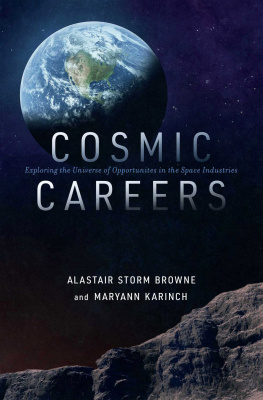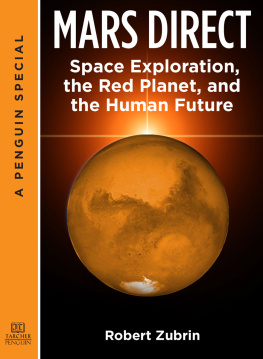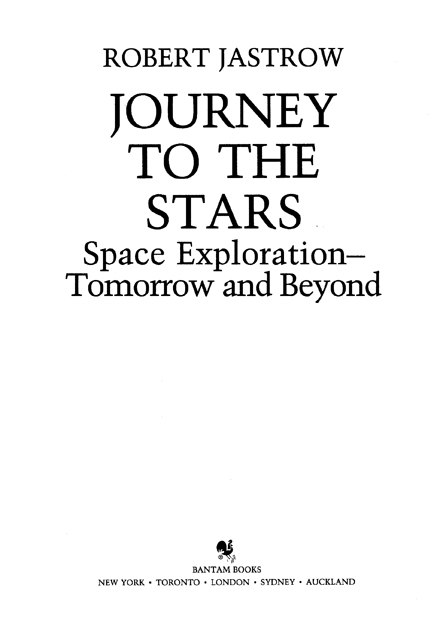JOURNEY TO THE STARS
A Bantam Book / September 1989
All rights reserved.
Copyright1989 by Robert Jastrow.
No part of this book may be reproduced or transmitted in any form or by any means, electronic or mechanical, including photocopying, recording, or by any information storage and retrieval system, without permission in writing from the publisher.
For information address: Bantam Books.
Library of Congress Cataloging-in-Publication Data
Jastrow, Robert, 1925
Journey to the stars : space exploration, tomorrow and beyond / Robert Jastrow.
p. cm.
eISBN: 978-0-307-79402-4
1. Outer spaceExploration. 2. Solar system. 3. Stars. 4. Astronautics in astronomy. I. Title.
QB500.J37 1989
919.904dc20
89-31920
Bantam Books are published by Bantam Books, a division of Bantam Doubleday Dell Publishing Group, Inc. Its trademark, consisting of the words Bantam Books and the portrayal of a rooster, is Registered in U.S. Patent and Trademark Office and in other countries. Marca Registrada. Bantam Books, 666 Fifth Avenue, New York, New York 10103.
v3.1
Contents
Introduction
If intelligent beings exist in space, and they look in our direction now and then, they will have observed something in recent years that must pique their curiosity. At television and FM frequencies, our planet blazes more brightly in the sky than the sun itself. For the first time in the history of the Universe, the earth has become a conspicuous object in the heavensa beacon sending signals to every nearby star that intelligent life has arisen on this planet.
Some astronomers believe no intelligent beings exist on these stars to receive our message. They believe mankind is alone in the Universe. But other astronomers are unwilling to accept that conclusion. They do not find it credible that, out of all the billions of planets in the Universe around us, only one should have been touched with the magic of life.
These astronomers point to the fact that the Universe is 15 billion years old, but the sun and the earth are only four and a half billion years old. It follows that if other solar systems contain intelligent life, this life must, on the average, have evolved at least a billion years beyond mankind.
Reflecting on the fact that the human brain has doubled in size in the last million years, the astronomers say to themselves: Beings whose evolution has carried them a billion years beyond the human level may possess great heights of brainpower; how interesting it would be to speak to them, and find out what they have learned in that long interval. The greatest thinkers in human history might be as children in their presence. In their eyes, one observer suggests, Einstein would qualify as a waiter and Thomas Jefferson as a busboy.
How long must we wait before we are admitted to the company of these stimulating creatures? If the extraterrestrials exist, our television signals have made them aware of our presence; but perhaps they find our thoughts too simple to warrant a response. Perhaps another billion years must pass before the mature beings of the Cosmos judge mankinds descendants worthy of their attention.
It seems a pity that we must wait so long for the interesting exchange to begin. But this reasoning may underestimate the curiosity the advanced extraterrestrials might display in such new arrivals as Homo sapiens. Intelligence and curiosity go together; the discovery of new worlds may be lifes greatest pleasure for a highly intelligent being. It is difficult to avoid a suspicion that the advanced beingsif they existhave visited the solar system at least once in all those billions of years. And having visited once, would they not return now and then, to find out how the garden is growing?
In fact, reports of such visits appear regularly in the press. However, my feeling about these reports is one of doubt, because the beings that appear in UFO reports usually seem too humanlike to match a scientists expectations for a form of life so far beyond mankind that it can cross the void between the stars. The extraterrestrial visitors are nearly always described as humanoid. They differ from humans in size and detail, but always have the same basic designmade of flesh and blood, and with four limbs, two grasping appendages and a talking head.
Yet forms of life like this appeared on the earth only a few hundred million years ago. In the perspective of the 15-billion-year history of the Cosmos, that is a short time. It is possible that extraterrestrials visiting our planet will happen to be within a few hundred million years of the human level of development, but that is not very likely. Most life in the Universeif other life existsis either several billion years beyond us in its evolutionary state, or several billion years behind us. Such creatures, removed from mankind by billions of years of evolution, will not resemble us in any way.
The history of life on the earth provides a hint of the changes evolution works in the forms of life during a billion years. Life began on our planet about four billion years ago. A billion years later, it had evolved to the stage of bacteria and other one-celled organisms. Two billion years after thatand now the time is one billion years agoevolution had reached the level of soft-bodied animals resembling the worm and the jellyfish. These creatures were the highest forms of life on the earth a billion years ago. In the last billion years of evolution, the fossil record tells us, the wormlike animals evolved into humans.
With this knowledge, derived from the fossil record and from the astronomical evidence for the antiquity of the Universe, what can we expect for the nature of life in other solar systems? If that life is a billion years behind mankind, it is likely to be at the level of the wormlike creatures which represented the most advanced organisms on the earth one billion years ago. In that case, this life could not have mastered the technology needed for the journey to our solar system. And if the life on another world is a billion years older, it is as far beyond us as we are beyond the wormso far evolved beyond mankind as to bear no relation to humans in body, mind or desires. This line of thought leads me to the conclusion that extraterrestrials arriving at the earth from another star are likely to be so different from the kind of life we know that we may not recognize them as living creatures when we see them.
This is the perspective, then, that science affords on mankinds place in the Cosmos: While we stand at the summit of creation on the earth, in the cosmic community of intelligent life we are among the children of the Universe. As we take our first steps into space, and reach out to cosmic life through our television and radar signals, it is my sense that the most momentous developments in the history of life on this planet may be about to unfold.
I
Dawn of the Space Age
The Moon Beckons
November 1957: Eve of the anniversary of the Russian Revolution. The scene is engraved in my memory. Three scientists came out of the Vanguard control center in Washingtonthe heart of Americas ill-fated satellite project. The moon was full. Two days before the Russians had launched a dog into orbit. Rumors flew; they would hit the moon and mark it with a splotch of red dye. Red and whitecould we add a patch of blue? Nobody laughed. We couldnt reach the moon; we couldnt even get our rockets off the pad. The Russians had captured high ground; we could not follow.










